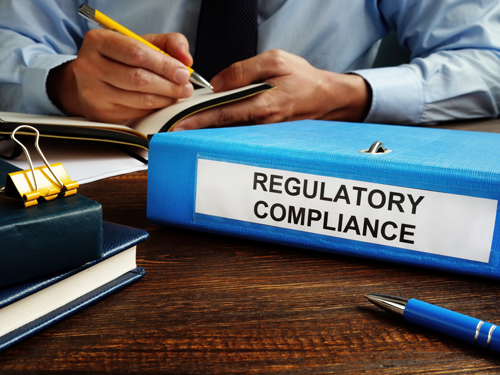Knowing your ISO 45001 interested parties' needs and expectations
In this blog, I define the term “interested parties” as relevant to ISO 45001:2018, help you determine who your interested parties could be and provide some practical help so you can comply with the requirements of Clause 4.2 (Understanding the needs and expectations of workers and other interested parties) in the Standard.
The definition of an interested party
An “interested party” is any person, business or stakeholder that can affect, be affected by, or perceive itself to be affected by your organisation’s decisions or activities.
These may include, for example, customers, local community groups, suppliers, third party services, regulators, investors, employees, workers and occupational/workplace health and safety representatives.

ISO 45001 interested party examples
Below is a checklist to assist with the identification of potential relevant interested parties applicable to your Safety Management System (SMS), and examples of their needs and expectations.
Bear in mind this list it not exhaustive so be sure to check for others relevant to your management system.
Click here to download this pdf checklist
Click here to download a pdf checklist of interested parties and examples of their needs and expectations.
| Group | Interested parties | Examples of needs/expectations |
| Government | Local council |
|
| Local fire authority |
|
|
| Occupational/workplace health and safety authority |
|
|
| Road authority |
|
|
| Your organisation | Employees and workers |
|
| Head office/Parent company |
|
|
| Other organisational sites |
|
|
| PR department |
|
|
| Shareholders |
|
|
| Other stakeholders | Certification auditors |
|
| Contractors, suppliers and consultants involved in your operations |
|
|
| Industry associations you hold membership to |
|
|
| Insurers |
|
|
| Landlord |
|
|
| Main customers |
|
|
| Medical facilities |
|
|
| Neighbours |
|
|
| Trade unions |
|
|
| Tradespeople working onsite |
|

Steps to help you comply with ISO 45001’s interested parties’ clause
Implement the process below to help you conform with the requirements imposed in Clause 4.2 of the ISO 45001.
Step 1
Once you’ve identified interested parties that apply to your Safety Management System, consider recording them in a register. (An example of an Interested Parties Register template from our health and safety management system template is provided later in the blog).
For individuals, businesses or stakeholders that “perceive itself to be affected” by your decisions or activities, they need to make that perception known to your organisation before you can record them as an interested party.
Step 2
Define the needs and expectations of your interested parties.
In consultation with senior management, identify which of these needs and expectations you are prepared to commit to addressing and add them to your “legal and other requirements”. Record those needs and expectations as legal and other requirements in your register.
Step 3
Implement a periodic review of the information in your register to ensure it remains current.
Impromptu reviews may also be required when internal or external issues related to your organisation and Safety Management System change.

Recording the right information in your register
You can document any relevant information in your Interested Parties Register.
As a minimum we suggest including this information:
- Interested party name
- Nature of the interest in your organisation
- Their needs and expectations
- Whether the need or expectation is a “legal or other requirement”
Here is an example of the Interested Parties Register template included in our SMS documentation package.

Accepting needs and expectations as “other requirements”
Legal and other requirements, as defined in Clause 6.1.3 of ISO 45001, includes legal, contractual and internal requirements as well as voluntary undertakings your organisation has committed to. (Similar to the definition of compliance obligations referred to in ISO 14001 and explained in this blog post).
The “legal requirements” part of the definition includes, among other things, obligations that arise from legislation, licences, contracts and guidelines and standards called up in legislation, orders issued by regulators and collective bargaining agreements.
The “other requirements” includes, among other things, obligations that arise from your organisation’s corporate requirements, non-mandatory standards and codes of practice, and the needs and expectations of interested parties that you have committed to addressing.
To comply with Clause 6.1.3, you must “maintain and retain documented information on your legal requirements and other requirements”. Determine a process whereby the needs and expectations adopted as “other requirements” are marked as such in your Interested Parties Register.

Assessing the information in your register
It is important that you keep your Interested Parties Register updated as it is used in other areas of your Safety Management System. For example, new stakeholder requirements may highlight new interested parties, or impact the needs and expectations of existing interested parties.
Changes to your Safety Management System that could affect, or be of interest to, your interested parties include expansion of the scope of your Safety Management System or the introduction of new organisational objectives and targets.
Determine a schedule to review your register regularly – good practice is usually every twelve months.

Other ISO 45001 requirements that relate to interested parties
While Clause 4.2 (Understanding the needs and expectations of workers and other interested parties) in ISO 45001 focuses specifically on the requirements relevant to interested parties, there are other clauses in the Standard that require the consideration of interested parties and their needs and expectations.
Clause 4.3 (Scope of the Environmental Management System)
Determining the needs and expectations of your relevant interested parties can help to further develop your Safety Management System scope.
Clause 5.2 (OH&S policy)
It is a requirement of the standard to communicate your OH&S policy across your organisation and make it available to appropriate interested parties.
If the performance data generated from contractors, suppliers, services or other stakeholders is significant to your management system performance and intended outcomes, then consider developing the OH&S policy in consultation with them.

Clause 5.4 (Consultation and participation of workers) & 6.1.2 (Risks and opportunities)
Hazard identification and risk control is the most crucial part of ISO 45001. Organisations must identify and control workplace hazards that have the potential to cause physical and psychological injury, ill health or fatality to their workers, employees, visitors, contractors, as well as the public. To do this effectively, organisations should consult interested parties as appropriate.
Clause 6.1.3. (Legal and other requirements)
Make sure you reference, in your register of legal and other requirements, the needs and expectations of interested parties that your organisation has chosen to adopt as “other requirements”.

Clause 8.1.4 (Procurement)
When engaging contractors or suppliers, consider any potential impacts on the needs and expectations of interested parties.
Clause 9.3 (Management review)
As part of assessing the continuing suitability and effectiveness of your Safety Management System in Management Review Meetings, include any significant issues related to the needs and expectations of interested parties.